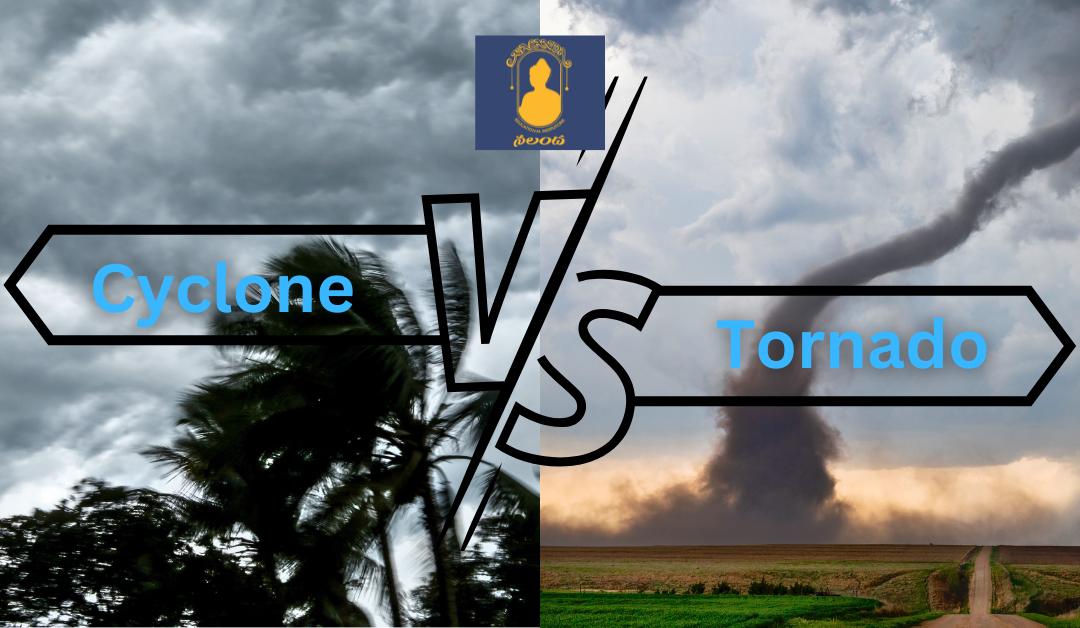When it comes to natural disasters, cyclones and tornadoes are two formidable forces of nature that strike fear into the hearts of people worldwide. While they may seem similar at first glance, cyclones and tornadoes have distinct characteristics that set them apart. In this blog post, we will explore what is the difference between a cyclone and a tornado, shedding light on their definitions, behaviours, and impacts.
Defining Cyclones and Tornadoes
Before we dive into the dissimilarities, let’s define what cyclones and tornadoes are:
Cyclone
A cyclone is a large-scale weather system characterized by a low-pressure centre, usually with strong winds circulating it. Cyclones can be categorized as tropical cyclones or extratropical cyclones, depending on their origin and location.
Tornado
A tornado, on the other hand, is a violent and destructive vortex of rapidly rotating winds that extends from the base of a thunderstorm cloud to the ground. Tornadoes are often characterized by their funnel-shaped cloud, called a condensation funnel, which can be seen swirling downwards from the storm cloud.
Differences between Cyclones and Tornadoes
Now that we understand the basic definitions, let’s explore the differences between cyclones and tornadoes in greater detail:
1. Size and Scale
Cyclones are much larger compared to tornadoes. Cyclones can span hundreds of miles and affect vast areas, while tornadoes are relatively smaller, typically measuring only a few hundred yards in diameter.
2. Formation
Cyclones originate over large bodies of water, such as oceans or seas, and are fueled by warm, moist air. Tornadoes, on the other hand, form over land when there is a clash between warm, humid air from the south and cold, dry air from the north, typically during severe thunderstorms.
3. Wind Speed and Intensity
While both cyclones and tornadoes are associated with strong winds, tornadoes are more intense in terms of wind speed. Tornadoes can reach wind speeds of over 300 miles per hour, making them one of the most powerful natural phenomena on Earth. Cyclones, although powerful, generally have lower wind speeds compared to tornadoes.
4. Duration
Cyclones are long-lasting weather systems that can persist for several days or even weeks. In contrast, tornadoes are short-lived, typically lasting only a few minutes to a few hours before dissipating.
5. Impact
Cyclones and tornadoes also differ in terms of their impact on the affected areas. Cyclones are known for their heavy rainfall, storm surges, and widespread flooding, which can cause extensive damage to infrastructure, agriculture, and human lives. Conversely, tornadoes primarily cause damage through their strong winds and the violent rotation of debris, resulting in localized destruction.
To summarize, cyclones are large-scale weather systems originating over water, while tornadoes are violent vortexes formed over land during severe thunderstorms. Cyclones cover extensive areas and last for days or weeks, while tornadoes are relatively smaller and short-lived. Tornadoes have much higher wind speeds and cause localized damage, whereas cyclones bring heavy rainfall, storm surges, and widespread flooding.
conclusion
Understanding the difference between cyclones and tornadoes is crucial for preparedness and safety during severe weather events. While both are natural disasters that demand respect and caution, their distinct characteristics and behaviours set them apart. By staying informed and following safety protocols, we can mitigate the risks associated with these powerful whirlwinds. Remember, knowledge is power and Nalanda school abides by the principle of education.


Recent Comments